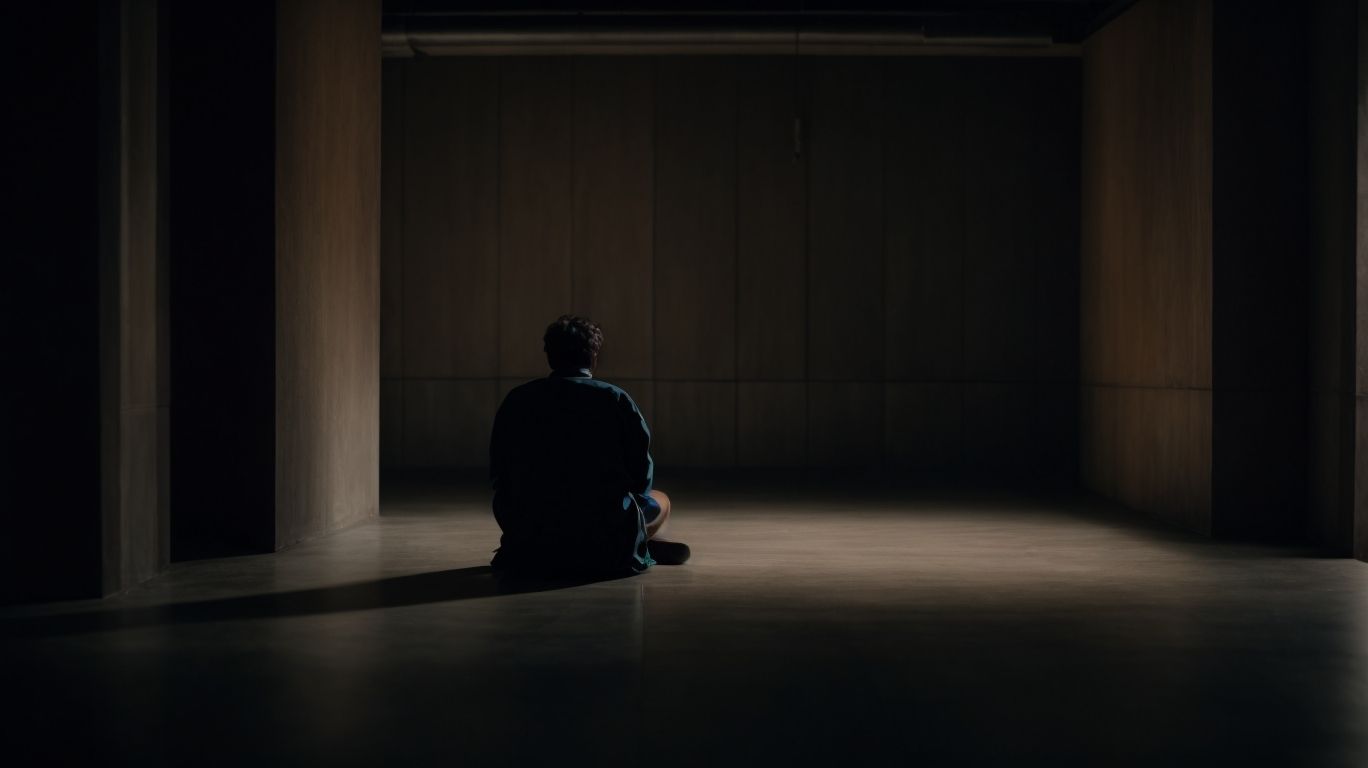Agoraphobia is a complex and often misunderstood anxiety disorder that can have a significant impact on a person’s life. From its causes to its symptoms and treatment options, there is a lot to learn about this condition.
In this article, we will delve into the roots of agoraphobia, explore its symptoms – both physical and emotional, discuss how it is diagnosed, and outline the various treatment options available. Whether you are seeking information for yourself or a loved one, this comprehensive guide aims to provide valuable insights into understanding and managing agoraphobia.
Contents
What Is Agoraphobia?
Agoraphobia is a type of anxiety disorder characterized by an intense fear of situations that may be difficult to escape from or where help may not be available.
Individuals with agoraphobia often experience overwhelming panic attacks when exposed to triggering situations, such as crowded places, public transportation, or open spaces. The fear of losing control or having a panic attack in these settings can lead to avoidance behaviors, where individuals may go to great lengths to avoid such situations, ultimately impacting their daily lives and social interactions.
This avoidance behavior can further exacerbate the anxiety, reinforcing the fear and making it more challenging for individuals to confront their fears. Over time, the fear of experiencing panic attacks in certain environments can limit a person’s ability to participate in normal activities, leading to social isolation and feelings of helplessness.
What Causes Agoraphobia?
The causes of agoraphobia are multifaceted, involving a combination of biological, psychological, and environmental factors that can contribute to the development of this debilitating condition.
Genetic predisposition plays a crucial role in agoraphobia, as individuals with a family history of anxiety disorders are more likely to develop this condition. Temperamental traits, such as being naturally anxious or timid, can also increase the risk of agoraphobia. Environmental triggers, like stressful life events or persistent exposure to overwhelming situations, may exacerbate symptoms. Traumatic experiences, such as previous incidents of panic attacks or phobias, can further fuel the development of agoraphobia.
Is Agoraphobia Hereditary?
Agoraphobia can have a hereditary component, with genetic factors and family history playing a role in predisposing individuals to this anxiety disorder.
Genetics can significantly influence the development of agoraphobia, as certain individuals may inherit a predisposition to anxiety disorders.
Family history serves as a crucial aspect in understanding the potential genetic vulnerability to agoraphobia.
Research suggests that individuals with a family history of anxiety disorders may have a higher likelihood of developing agoraphobia due to shared genetic factors.
Twin studies have indicated a higher heritability of agoraphobia, pointing towards a strong genetic influence on the disorder.
Can Traumatic Events Lead to Agoraphobia?
Traumatic events can be significant triggers for the onset of agoraphobia, as they may instill a sense of fear and vulnerability that manifests in avoidance behaviors and panic attacks.
When an individual experiences a traumatic event, such as a natural disaster, physical assault, or severe accident, their brain’s response mechanisms can be profoundly impacted. The emotional distress and psychological wounds from these occurrences can deeply affect one’s perception of safety and security.
This heightened state of alertness and anxiety can lead to hypervigilance in everyday situations, making environments outside the familiar and perceived safe zones incredibly daunting. The fear of encountering a similar traumatic experience can be paralyzing, prompting individuals to avoid public spaces or situations where they feel exposed or vulnerable.
What Are the Symptoms of Agoraphobia?
The symptoms of agoraphobia encompass a range of emotional and physical manifestations that can significantly impact an individual’s mental health and daily functioning.
Individuals experiencing agoraphobia may commonly face intense feelings of fear and anxiety when in situations from which escape might be challenging or where help might not be readily available.
These situations often include crowded areas, open spaces, public transport, or places they perceive as difficult to leave.
The fear of having panic attacks in these environments can further heighten their anxiety levels, leading to anticipatory anxiety that can be debilitating.
Panic attacks are a frequent occurrence in individuals with agoraphobia and can manifest through symptoms like rapid heartbeat, sweating, trembling, shortness of breath, and a sense of impending doom.
What Are the Physical Symptoms of Agoraphobia?
Physical symptoms of agoraphobia often include rapid heartbeat, shortness of breath, dizziness, sweating, and tremors, which are commonly experienced during panic attacks.
These somatic symptoms can be overwhelming and are often accompanied by a sense of impending doom or loss of control, further exacerbating the individual’s anxiety.
During a panic attack, the body’s fight-or-flight response kicks in, leading to increased heart rate, hyperventilation, chest pain, and gastrointestinal distress.
Other manifestations of anxiety-related physical reactions can include muscle tension, headaches, and digestive issues, all of which can significantly impact an individual’s well-being and quality of life.
What Are the Emotional Symptoms of Agoraphobia?
Emotional symptoms of agoraphobia often involve overwhelming fear, persistent anxiety, feelings of helplessness, and a sense of impending doom, all of which contribute to the avoidance of specific situations.
Agoraphobia, a serious condition that often restricts individuals’ day-to-day activities, can lead to feelings of isolation and loneliness due to the inability to participate in social gatherings or outdoor events.
People with agoraphobia may experience panic attacks when faced with situations that trigger their fears, such as crowded places or open spaces, intensifying their anxiety and reinforcing their avoidance behaviors.
The psychological components of agoraphobia involve a complex interaction of genetic predisposition, past traumas, and cognitive distortions that perpetuate the cycle of fear and avoidance.
How Is Agoraphobia Diagnosed?
Agoraphobia is typically diagnosed based on criteria outlined in the Diagnostic and Statistical Manual of Mental Disorders (DSM-5), which specifies the symptoms and duration required for a formal diagnosis.
When assessing patients for agoraphobia, mental health professionals look for recurrent fear or anxiety about two or more of the following situations: using public transportation, being in open spaces, standing in line or being in a crowd, being outside of the home alone. These situations must consistently provoke fear or anxiety due to thoughts of difficulty escaping or receiving help in case of panic-like symptoms or other incapacitating symptoms. The DSM-5 also highlights the importance of the duration of these symptoms, which should persist for at least 6 months to warrant a diagnosis of agoraphobia.
What Are the Treatment Options for Agoraphobia?
Treatment options for agoraphobia typically include a combination of therapy, medications, and lifestyle changes aimed at managing symptoms and improving daily functioning.
Therapy, such as cognitive-behavioral therapy (CBT), is often a cornerstone in the treatment of agoraphobia. CBT helps individuals identify and challenge irrational thoughts and beliefs that contribute to their anxiety in certain situations. It also equips them with coping strategies to gradually expose themselves to feared situations, known as exposure therapy.
Medications, such as selective serotonin reuptake inhibitors (SSRIs) or benzodiazepines, may be prescribed to help alleviate symptoms of anxiety and panic attacks. These should be used cautiously and under the guidance of a healthcare provider due to the risk of dependency.
Along with therapy and medications, lifestyle changes like regular exercise, adequate sleep, and stress management techniques can play a crucial role in managing agoraphobia symptoms. Engaging in relaxation techniques, such as mindfulness or deep breathing exercises, can help individuals regulate their anxiety levels and improve overall well-being.
Therapy
Therapy, particularly cognitive behavioral therapy (CBT), is a cornerstone of agoraphobia treatment, focusing on addressing maladaptive thoughts and behaviors that contribute to anxiety and avoidance.
Cognitive behavioral therapy (CBT) is widely recognized for its efficacy in treating agoraphobia by helping individuals understand and modify their negative thought patterns. The core principle of CBT is to challenge irrational beliefs and replace them with healthier, more adaptive responses. For instance, exposure therapy is a common CBT technique used to gradually expose agoraphobic individuals to feared situations, allowing them to confront their fears in a controlled environment.
What Types of Therapy Are Effective for Agoraphobia?
Exposure therapy and relaxation techniques are among the most effective types of therapy for agoraphobia, helping individuals gradually confront feared situations and manage anxiety responses.
Exposure therapy involves exposing individuals to the situations they fear in a controlled and safe environment, allowing them to confront their anxieties and learn that they can cope with and overcome their fears.
On the other hand, relaxation techniques such as deep breathing, progressive muscle relaxation, and mindfulness practices help individuals lower their overall anxiety levels, enabling them to respond more calmly to stressors and triggers.
For instance, a person with agoraphobia who fears crowded spaces may start by visualizing themselves in a busy plaza, gradually progressing to actually visiting a crowded area with the support of a therapist.
Medications
Medications, particularly selective serotonin reuptake inhibitors (SSRIs), are commonly prescribed to alleviate anxiety symptoms and manage panic attacks in individuals with agoraphobia.
SSRIs are a type of antidepressant medication that work by increasing the levels of serotonin in the brain. Serotonin is a neurotransmitter that helps regulate mood, emotions, and anxiety levels.
SSRIs are often the first-line pharmacological treatment for agoraphobia due to their effectiveness in reducing symptoms such as fear and avoidance behaviors associated with this anxiety disorder.
As with any medication, SSRIs may have potential side effects, including nausea, headache, insomnia, and sexual dysfunction. It’s essential for individuals taking SSRIs to discuss these possible side effects with their healthcare providers.
What Types of Medications Are Used for Agoraphobia?
Benzodiazepines and antidepressants are common types of medications used for agoraphobia, each serving different purposes in the management of anxiety and panic symptoms.
In terms of benzodiazepines, these medications work by enhancing the action of a neurotransmitter called gamma-aminobutyric acid (GABA) in the brain.
This process helps to reduce anxiety levels by calming the overactivity of certain brain cells responsible for generating feelings of fear and stress.
Antidepressants, on the other hand, such as selective serotonin reuptake inhibitors (SSRIs) and serotonin-norepinephrine reuptake inhibitors (SNRIs), regulate the levels of serotonin and norepinephrine in the brain.
By doing so, they help to improve mood, alleviate anxiety, and enhance overall emotional well-being in individuals struggling with agoraphobia.
Lifestyle Changes
Along with therapy and medications, lifestyle changes such as regular exercise, stress management techniques, and social support can play a crucial role in managing agoraphobia symptoms.
Self-care practices are essential for individuals dealing with agoraphobia as they can help reduce anxiety levels and increase overall well-being. Engaging in physical activities like yoga or walking not only improves physical health but also boosts mental clarity. Incorporating mindfulness exercises into the daily routine is another effective way to cope with triggers and panic attacks.
Building a strong support network of understanding friends or family members can provide comfort during challenging times. Setting small achievable goals for daily tasks can instill a sense of accomplishment, aiding in confidence-building and symptom management.
How Can Lifestyle Changes Help with Agoraphobia?
Lifestyle changes, such as engaging in regular physical activity, cultivating a strong support network, and practicing relaxation techniques, can significantly improve agoraphobia symptoms and overall well-being.
Exercising regularly can help reduce anxiety levels, boost mood, and enhance self-esteem. Building a strong support network through therapy, support groups, or open communication with loved ones can provide emotional validation and encouragement. Practicing relaxation techniques like deep breathing, mindfulness, or yoga can help manage stress and promote inner calmness. These lifestyle modifications not only alleviate agoraphobia symptoms but also foster a sense of give the power toment and control over one’s mental health.
Can Agoraphobia Be Cured?
While agoraphobia may not have a definitive cure, it can be effectively managed and treated through a combination of therapy, medications, and lifestyle changes that help individuals reduce symptoms and improve their quality of life.
Developing coping mechanisms plays a crucial role in addressing agoraphobia, allowing individuals to navigate challenging situations with greater ease.
Therapy, such as cognitive-behavioral therapy (CBT), equips patients with tools to challenge negative thought patterns and gradually face feared situations. Medications like selective serotonin reuptake inhibitors (SSRIs) are often prescribed to alleviate symptoms.
Long-term treatment strategies focus on building resilience and fostering self-awareness to prevent relapses. Ongoing therapy is essential to maintain progress and support individuals in coping with triggers that may arise.
How Can You Support Someone with Agoraphobia?
Supporting someone with agoraphobia involves providing understanding, encouragement, and practical assistance to help them navigate daily challenges, access treatment resources, and manage the impact of the disorder on their daily functioning.
One essential way to assist individuals with agoraphobia is by being patient and validating their feelings, acknowledging the realness of their struggles. By creating a safe and reassuring environment, you can help alleviate anxiety triggers and give the power to them to gradually confront their fears. Offering to accompany them to therapy sessions or doctor appointments can provide a sense of security and encourage treatment adherence.
Educating oneself about agoraphobia, including its symptoms and treatment options, can facilitate more effective communication and better support provision. Understanding the challenges they face, such as difficulty leaving home or avoiding certain places, fosters empathy and enables you to offer targeted assistance.
Encouraging the person to seek professional help and reassuring them that it’s okay to ask for support is crucial. Family members and friends can play a significant role by actively listening, offering practical help with day-to-day tasks, and creating a judgment-free space where the individual feels understood and accepted. For more information on understanding agoraphobia, including its causes, symptoms, and treatment, please visit the Understanding Agoraphobia: Causes, Symptoms, and Treatment page provided by the NHS.
Frequently Asked Questions
What is agoraphobia and what are its causes?
Agoraphobia is a type of anxiety disorder characterized by a fear of situations where escape may be difficult or embarrassing. The exact causes of agoraphobia are not fully understood, but it is believed to be a combination of genetic, environmental, and psychological factors.
What are the symptoms of agoraphobia?
The symptoms of agoraphobia can vary from person to person, but may include fear of being alone, fear of crowded places, fear of leaving home, panic attacks, and avoidance behaviors. Physical symptoms such as rapid heartbeat, sweating, and trembling may also occur.
Can agoraphobia be treated?
Yes, agoraphobia can be treated through various methods such as therapy, medication, and self-help techniques. It is important to seek help from a mental health professional to develop an individualized treatment plan.
What types of therapy are effective for treating agoraphobia?
Cognitive-behavioral therapy (CBT) has been found to be the most effective form of therapy in treating agoraphobia. Exposure therapy, a type of CBT, helps individuals gradually face their fears in a safe and controlled environment.
Are there any medications that can help with agoraphobia?
Antidepressants and anti-anxiety medications may be prescribed to help manage the symptoms of agoraphobia. These medications can help reduce feelings of fear and anxiety, and can be used in combination with therapy for more effective treatment.
What can I do to manage my agoraphobia?
Self-help techniques such as relaxation techniques, breathing exercises, and mindfulness practices can be helpful in managing agoraphobia. It is also important to make lifestyle changes such as getting regular exercise, maintaining a healthy diet, and avoiding substances like alcohol and drugs. Seeking support from loved ones and joining a support group can also be beneficial.




